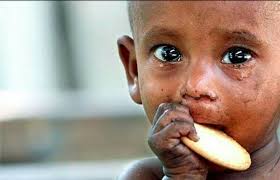 By Nageshwar Patnaik in Bhubaneswar, October 26, 2021: The Covid-19 crisis has disrupted normal life and businesses in ways nobody could have imagined and at a speed no-one predicted. Some 14 crore jobs were lost in the country during the lockdown. Compared to the previous year, more than 45% of households across the nation’s income had come down. Economic performance got affected as large numbers were out of work leading to slow down in the aggregate demand, restrain capital investment and hits the economy’s growth potential.
By Nageshwar Patnaik in Bhubaneswar, October 26, 2021: The Covid-19 crisis has disrupted normal life and businesses in ways nobody could have imagined and at a speed no-one predicted. Some 14 crore jobs were lost in the country during the lockdown. Compared to the previous year, more than 45% of households across the nation’s income had come down. Economic performance got affected as large numbers were out of work leading to slow down in the aggregate demand, restrain capital investment and hits the economy’s growth potential.
However, the good news is that the Indian economy is expected to grow 10.5 per cent or more in the current fiscal, according to Niti Aayog Vice Chairman Rajiv Kumar. On Thursday he was speaking at a virtual conference organised by the Public Affairs Forum of India (PAFI).
Meanwhile, the Reserve Bank of India (RBI) has lowered the growth projection for the current financial year to 9.5 per cent from 10.5 per cent estimated earlier while the IMF has projected a growth of 9.5 per cent in 2021 and 8.5 per cent in the next year. The country’s economy grew by a record 20.1 per cent in the April-June quarter, helped by a very weak base of last year and a sharp rebound in the manufacturing and services sectors notwithstanding the harrowing second COVID wave.
However, two recent reports – one by the World Economic Outlook (WEO) released by the International Monetary Fund (IMF) and the other on employment status study by the Centre for Monitoring Indian Economy (CMIE) make the point that the latest shape of recovery in economy may lead to a much higher Gross Domestic Product (GDP) growth in 2021-22 compared to the low base of pandemic hit 2020-21, but this growth is not bringing the desired impact on the employment level as a whole and the present recovery process will further widen inequality in the Indian society, according to experts.
During May-July, 2018, the central government said the lack of employment opportunities and rising prices are India’s most pressing challenges. The lockdown has left crores of migrant workers unemployed. They primarily hail from rural areas but live most of the year in megacities serving as day labourers, construction workers, or domestic help. During the lockdo wn, an estimated 14 crore people lost employment. Compared to the previous year, more than 45% of households across the nation’s income had dropped.
wn, an estimated 14 crore people lost employment. Compared to the previous year, more than 45% of households across the nation’s income had dropped.
The Indian economy is said to have lost over Rs 32,000 crore every day during the first 21 days of complete lockdown. The country’s unemployment rate rose to 27.11 % for the week ended May 3, up from the fewer than 7% level before the start of the pandemic in mid-March. The income levels of 90 per cent of the population sharply fell while the upper 10 per cent reaped the benefits from the growth process.
The WEO report has talked of the recovery process as well as the limitations faced by the economies of both developed and the developing world, though the type of challenges varied from country to country. Its key message was that the global economic recovery momentum had weakened largely due to the pandemic-induced supply disruptions. Increasing inequality among nations is a cause for serious concern, it noted. In rich countries, the inequality has also increased but these countries have a foolproof social security protection.
In contrast, in the developing and the poor countries, the situation is completely different as the marginalized and those who have fallen below the poverty line due to pandemic-related constraints had to live sans any social security protection in most cases. For India, that is a big concern and to this, the efforts so far of the Modi Government have been appalling.
CMIE data corroborates the IMF contention in respect of India relating to employment not picking up despite increased GDP. CMIE data shows the total number of employed people in Indian economy as of May-August 2021 was 394 million as against 405 million in the same period in 2020, the period of lockdown in India.
Even after one year and the easing of lockdown in most parts of the country leading to higher GDP growth in economy, the employment position declined, rather than improving. Thus, the recovery process in 2021-22 has not been accompanied by commensurate employment. The pandemic-related job losses continued in industrial units even after recovery started and the units started making profits in their operations with less people.
 Corporates earned hefty profits in the first and second quarter of 2021-22 by reducing the workforce. These corporates have become richer while the workers with pay cuts and job losses have become poorer. That is the duality of the trajectory of growth in 2021-22. Then, there is the issue of current problems with the unorganized sector which comprises 86.8 of the workforce in India. Out of this, the informal sector consists of 84.5 per cent of labour and the formal 1.3 per cent.
Corporates earned hefty profits in the first and second quarter of 2021-22 by reducing the workforce. These corporates have become richer while the workers with pay cuts and job losses have become poorer. That is the duality of the trajectory of growth in 2021-22. Then, there is the issue of current problems with the unorganized sector which comprises 86.8 of the workforce in India. Out of this, the informal sector consists of 84.5 per cent of labour and the formal 1.3 per cent.
The income levels of 90 per cent of the population have fallen while the upper 10 per cent might accrue benefits from the growth process, but mostly, the real beneficiaries will be 2 per cent of the population.
Nevertheless, many recent surveys indicate that job creation in the economy has picked up pace. According to CMIE Consumer Pyramids Household Survey, September saw 85 lakh additions to employment taking employment in September last to the highest mark since the Covid-19 shock in March 2020. The increase was visible both in urban and rural areas and there were sharp rise in the jobs number in all the major occupation groups and salaried jobs.
The Modi government faces a herculean to take pro-active steps to rejuvenate the informal sector with more funds and marketing assistance to improve the employment position in the country.


Leave a Reply
Be the First to Comment!